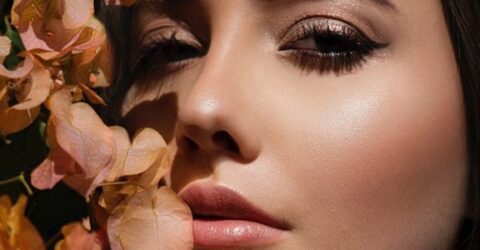What is airbrushing?
We explain what is airbrushing used for, how it’s achieved and why it’s controversial

As a physical artform, airbrushing has been around since the late Victorian times, when canisters of compressed air were used to spray paint in a very consistent way.
As a digital artform, airbrushing has been around since the early 1980s, when it was first used to smooth out unruly pixels on rudimentary graphics.
Today, the term airbrushing has largely pejorative connotations. Definitions of the word use knowing phrases like “alter or conceal” and “represent as more beautiful than in reality”.
Along with its sister term ‘photoshopping’, it’s become shorthand for the false reality depicted on social media – depictions of perfect lives which are anything but.
But what is airbrushing used to accomplish, and why is it so controversial?
Airs and graces
Airbrushing is a form of image manipulation offered by paid and free photo editing programs alike.
It involves modifying an image to improve its appearance, such as creating a consistent surface where there might otherwise be changes in colour or texture.
It may also refer to inserting things which weren’t in the original image, removing or repositioning objects, or altering their size and scale.
Common examples of airbrushing might include removing an electricity pylon from a countryside scene, or creating a meme by superimposing a celebrity into a famous picture.
It’s arguably best known nowadays for its role in improving people’s appearances, helping to slim down waistlines and create flawless complexions.
Scars, pockmarks and acne vanish beneath the airbrush tool found in software packages like Adobe Photoshop or Corel PaintShop Pro.
On one hand, this improves people’s appearance. On the other hand, airbrushed photos can quickly become unrepresentative of their original content.
Airbrushing a selfie might seem innocuous, but if you’re using that selfie as your Tinder profile pic, you’re effectively lying about your appearance.
(Then again, given the amount of lies contained in many Tinder profiles, an unrealistic selfie might be the least of anyone’s concerns).
What is airbrushing responsible for?
In many respects, it’s responsible for the ongoing spread of fake news, and an increasingly instinctive distrust of anything displayed on our screens.
Imagine a photo of tanks travelling along a road beside a dead body. Now imagine someone airbrushed the flag of an enemy state over the one originally painted onto the turret.
The narrative would be entirely different, yet it wouldn’t take a graphic designer long to do this to a standard that would fool most observers, even on close inspection.
The ability to fool most of the people most of the time has seen airbrushing blamed for spikes in anxiety, self-harm and depression among those who feel unable to replicate social media perfection.
Advertising has been a key beneficiary of airbrushing, with cosmetics and beauty adverts routinely depicting results which no customer could expect to match in real life.
Airbrushing is also the progenitor of deepfakes, where artificial intelligence is used to create false representations of seemingly real video footage.
A celebrity’s face could be superimposed over someone else’s; a politician might be shown in a location they never visited; a sportsperson may be blamed for a rival’s mistake.
Again, while individual motives for deepfake creation might vary, the cumulative result is a weakening of the public’s trust in anything they see or hear online.
At least airbrushing can’t affect the written word – though even then, there is concern that AI tools like ChatGPT could be passing off their content as being generated by humans.






